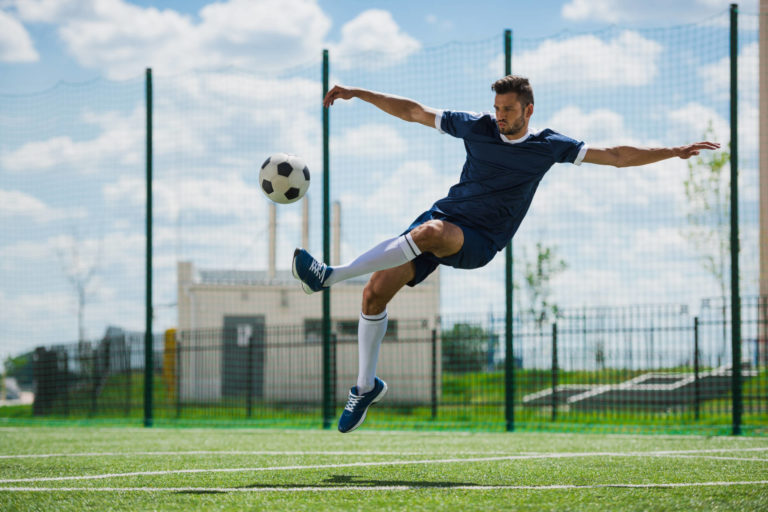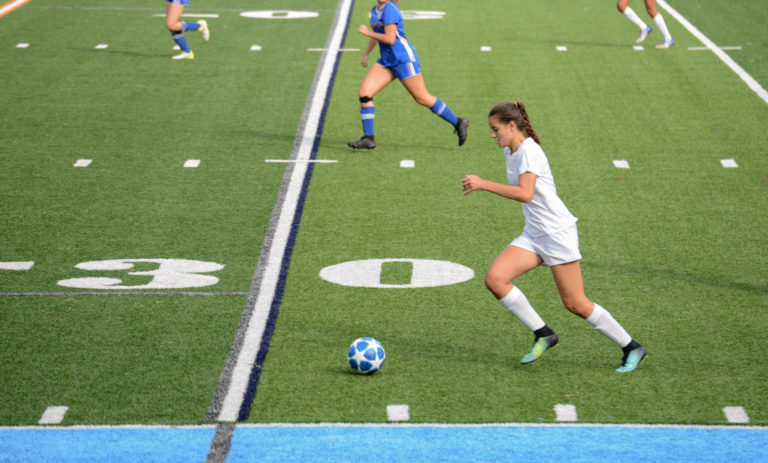Strengh Sensei Podcast Library
CHP Podcast #6 Soccer
Charles Poliquin’s unique approach to becoming “Soccer Strong!”

Those who have followed Charles Poliquin know that he has taken a dim view of the strength and conditioning methods of soccer players.
In conversation with strength coach John Conner, Poliquin says soccer is decades behind the strength and conditioning program of other sports. In one article, Poliquin was asked to range several major sports in strength coaching on a scale of 1-10. Here was his response:
American Football: 10
Ice Hockey: 9
Rugby: 7
Basketball: 3
Soccer: 1
Baseball: -2
“I’ve never seen a pro sport as disorganized in terms of modern application of exercise physiology and strength training,” says Poliquin. “If you go
around the top soccer teams around the world, the level of physical qualities is quite under par if you compare it to other sports.” Among these qualities Poliquin discusses in the podcast are vertical jumping ability, muscular endurance, power output, elastic strength, and maximal strength.
One reason Poliquin believes soccer is behind the times in strength and conditioning is the sport’s focus on SAQ. SAQ is an acronym for speed,
agility, and quickness training. Examples of SAQ include the use of speed ladders and cones.
Speed ladders are a series of linked rungs spaced equal distances apart. Soccer players would run quickly across the ladders in various patterns to improve agility. Poliquin notes that if these ladders were effective for increasing speed, then elite 100-meter sprinters would use them. In fact,
research has shown that the most effective way to increase running speed is to apply more force into the ground, not move the arms and legs faster. Speed ladders do not improve this athletic quality.

Cones, usually made of lightweight plastic, are placed in specific formations the athletes needed to maneuver around at high speeds. Poliquin says that running in pre-set patterns has little transfer to the sport of soccer. He says that to make agility drills transfer to the sport, they should be performed with a soccer ball.
Rather than prescribing a cookie-cutter workout for soccer, Poliquin stresses the importance of sport-specific testing to determine an athlete’s strengths and weaknesses. For example, Poliquin says soccer is not an aerobic sport, so testing this energy pathway would be pointless. Instead, he would rather have coaches test the ability of their athletes to perform short sprints for repeated efforts, as research has shown that the majority of sprints in a soccer game are less than 20 meters. Poliquin provides many more examples in this podcast.
Asked what are the best predictor lifts for a soccer player, Poliquin said exercises such as power snatches and front squats would be good for a
structurally balanced soccer player. As for the most important muscle soccer players need to emphasize, Poliquin says that would be the hamstrings. He says the hamstrings help with controlling the direction of kicks and also help stabilize the knee to prevent ACL injuries.
Although the focus of this podcast is on testing and training, Poliquin discusses the importance of good nutrition and the value of specific
supplements to help performance.
Coach Poliquin believes that if the soccer community changed its approach to strength and conditioning, we would see a faster, more exciting game. If you’re a soccer player or soccer coach and want to learn more, invest in your copy of CHP Podcast #6: Soccer.
[To listen to the Strength Sensei Exclusive Podcast Interview with Charles Poliquin, CHP Podcast #6: Soccer, click this link: Soccer Podcast]
Join the Dojo of Strength for new content released each month including exclusive articles and videos from Charles Poliquin and our team of coaches.
